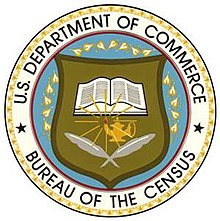市域

市域(英語:city proper)是由市界(city limits)所围合而成的区域[1][2]。市域并不只限于地理意义上的实体城市,其范围包括任何符合定义,而联合国将“city proper”定义为“包含历史城市中心的单一政治管辖区”("the single political jurisdiction which contains the historical city center.")[3]
市域是定义城市区域和人口的基本概念之一。另外两个是市区(或建成区)和城市群。划定市域的市界,在一些国家可以非常广大,而在有些国家又非常狭小。这也是它被争论不休的原因之一。[4]
用法
[编辑]
严格而言,市域(city proper)是一个人口学术语。每隔两年,联合国都会以《世界城镇化展望》(World Urbanization Prospects)为题,发表世界各国城市和农村人口的推算和预测。该书将城市的人口定义为“居住在城市行政边界内的人口”。[5]该书还说:“行政边界所定义的市域可能不包括很大比例的在城市工作或学习的人口居住的郊区。”("city proper as defined by administrative boundaries may not include suburban areas where an important proportion of the population working or studying in the city lives.")[6]

人口学中,市域是定义城市地区和人口的三大概念之一。另外两个是城市集聚区(或中国大陆使用的建成区、日本使用的人口集中地區)和城市群。此外,美国还设有人口普查统计区及其排列。
联合国大学一篇题为《城市住区》(Urban Settlement)[7] 的工作论文回顾了最常用的数据来源,并强调了定义和衡量城市与农村人口规模所带来困难。它指出:“市域是由法定和行政标准规定的,且通常只包括那些法定的区域,往往是历史上建立的行政单位的地理区域。但是,许多城市地区已经成长至远远超出了市域范围,导致需要其他的衡量标准。城市集聚区(urban agglomeration)事实上成了达到城市密度的连续地域的轮廓内的人口总和,而无须考虑行政边界。因此市区是由密度决定,人口密度低于某个临界值处即为市区边界。大都会区是一个更全面的概念。”
简而言之,并无用哪种方式定义城市或都会区才“正确”之说;市域仅仅是其中一种方法。
词源
[编辑]英文的“city proper”是由行政区划意义上的“city”(市,an incorporated administrative district[8])和表示“某事物、的严格界定”(strictly limited to a specified thing, place, or idea)或“严格准确”(strictly accurate)[9]的“proper”组合而成。英文百科全书常以“city proper”为例说明“proper”一词的“严格定义的”(tightly defined)的义项。(以下译文仅供参考,定义以原文为准)
- Encarta
- "narrowly identified, strictly identified and distinguished from something else" – stayed in the suburbs, not the city proper[10]
- 【译】“狭义定义,严格地区分于他者”——留在郊区,别去市里
- 梅里亚姆-韦伯斯特
- "strictly limited to a specified thing, place, or idea <the city proper>"[11]
- 【译】“某个事物、地点,或想法的严格界定 <市域>”
- Dictionary.com
- "in the strict sense of the word (usually used postpositively)":- Is the school within Boston proper or in the suburbs?[12]
- 【译】“某词语的严格意义(通常后置)”:——这所学校在波士顿市里还是郊区?
- The Free Dictionary
- "Being within the strictly limited sense, as of a term designating something: the town proper, excluding the suburbs".[13]
- 【译】“在严格意义上,如指定某事物的术语:镇本身(镇域),不包括郊区。”
国际化
[编辑]特别是在翻译为或译自英语文献时,“city proper”可能在不同地区有不同的含义。一些语言可能没有同义词。
误用
[编辑]
即使在英语世界,对“city proper”(市域)一词的混淆也不容小觑。有时,城市的官方网站声称其“市域是城市中人口最密集的地方”——这是对该概念的常见误解。即使是知名人口统计学专家,例如Richard L. Forstall、Richard P. Greene和James B. Pick,《Which Are The Largest? Why Published Populations For Major World Urban Areas Vary So Greatly》(哪个最大?为什么世界主要城市地区公布人口变化如此之大)一文的作者(该文是大都會區列表 (依人口排列)条目的基础),[14]也混淆了“city proper”的用法。在第2页,他们对“city proper”给了一个“行政定义”(administrative definition)。在第5页,文章暗示“city proper”由行政边界定义。然而在第14页,他们又将“city proper”作为东京、墨西哥城和芝加哥管辖区域中更小的区域,暗示“city proper”(市域)和“administrative area” (管辖区域)可以不同。将文献从其他语言翻译成英语时,常有人误用“city proper”来表示“市中心”(city center)。[15]因此,不应不假思索地认为“city proper”一定表示管辖区域。阅读翻译的文献时须特别注意这一点。
争议
[编辑]

在一些国家,划定市域的市界可能非常广大,又或非常狭小。这可能成为争议的缘由。
“按面积排列的城市列表”中,比一些国家还大的不知名城市也会上榜。按面积,巴西阿爾塔米拉(84,000人口)比希腊还大。澳大利亚卡尔古利-博尔德市(32,000人口)面积比匈牙利、葡萄牙、奥地利或爱尔兰岛都大。尽管上述例子争议较小,但中国城市却是分歧的由来之一。
中国内蒙古的呼伦贝尔市曾是世界上面积最大的市。根据“Urban Settlement”工作论文,“1986年,为了应对地方层面日益增长的行政需求,中国基本上将所有县重新划归为市,使当地市政府能够控制周边地区”。作者还写道“中国城市重庆也是一个很好的案例。尽管重庆直辖市域的总人口超过3000万,但实际居住在重庆市域的人口不到600万。因分类方式而异,重庆有时被列为世界上最大的城市,而有时甚至没有出现在城市人口排名的前列”。[7](注意“市域”的上下文,此处疑为误用,但亦可能指排除了直辖市范围内的县和县级市后,余下的市辖区管理的范围。)
Yang Yunyan用武汉的例子描述了在解读中国城市人口数据时遇到的问题。[17] 一片发表于《Journal of Eurasian Geography and Economics》(欧亚地理与经济学杂志)上的论文《Misconceptions and Complexities in the Study of China's Cities: Definitions, Statistics, and Implications》(中国城市研究中的误区与复杂性:定义、统计与启示)阐述并澄清了导致对中国主要城市居民数产生误会和混淆的因素。(这篇文章中,作者在“市辖区”的语境下使用“city proper”,其面积相对较小。)[18]
拉哥斯都会区则是另一极端。根据人口普查,该市有800万人口,但这点有争议。拉各斯州的官方数据估计拉各斯都会区的人口超过1400万。[19]但是,拉各斯并没有大都会政府。拉各斯都会在1976年被撤销,并分成了多个地方政府区。结果是非洲最大的城市,同时也是全球成长最快的城市[20]甚至不能在市域的标准下上榜。澳大利亚也存在相似案例,大城市被分割成了更小的地方政府区。[來源請求]
参见
[编辑]- 建制市
- 世界最大城市
- 各國城市列表
- 全球首都人口排名
- 历史上的城市规模
- 按市域人口排列的世界城市列表(基于市域全境)
- 大都會區列表 (依人口排列)(基于Richard Forstall、Richard Greene和James Pick的研究)
- 按人口排列的世界城市地区列表(基于Demographia的世界上连续的市区的列表)
- 市域铁路、通勤铁路
参考资料
[编辑]- ^ United Nations. Dept. of Economic and Social Affairs. Demographic yearbook, 2000. United Nations Publications, 2002. 2002: 23. ISBN 92-1-051091-7.
- ^ Robert B. Potter; Virginia Potter. Urban development in the world dryland regions: Inventory and prospects. Geoforum. 1978: 349–379.
- ^ Global Urban Indicators - Selected Statistics (PDF). UN habitat. November 2009 [20 Jul 2010]. (原始内容 (PDF)存档于10 January 2011).
- ^ City of Saint John. [2018-08-29]. (原始内容存档于2021-02-23).
- ^ World Urbanization Prospects: The 2003 Revision. United Nations. 2004: 2 [2010-07-19]. ISBN 92-1-151396-0.[失效連結]
- ^ World Urbanization Prospects: The 2003 Revision. United Nations. 2004: 104 [2010-07-19]. ISBN 92-1-151396-0.[失效連結]
- ^ 7.0 7.1 David E. Bloom, David Canning, Günther Fink,Tarun Khanna, Patrick Salyer. Urban Settlement (PDF). Working Paper No. 2010/12. Helsinki: World Institute for Development Economics Research . [20 Jul 2010]. (原始内容 (PDF)存档于2011-06-13).
- ^ WordNet Search - 3.0. Wordnetweb.princeton.edu. [2010-07-26]. (原始内容存档于2019-05-20).
- ^ Proper - Definition and More from the Free Merriam-Webster Dictionary. Mw2.merriam-webster.com. 2007-04-25 [2010-07-26]. (原始内容存档于2010-06-21).
- ^ Encarta example for the usage of "proper". [2018-08-29]. (原始内容存档于2009-04-03).
- ^ "Merriam-Webster example for the usage of proper (页面存档备份,存于互联网档案馆)"
- ^ Dictionary.com example for the usage of "proper". [2018-08-29]. (原始内容存档于2016-03-03).
- ^ Free Dictionary example for the usage of "proper". [2018-08-29]. (原始内容存档于2021-03-10).
- ^ Which Are The Largest? Why Published Populations For Major World Urban Areas Vary So Greatly 互联网档案馆的存檔,存档日期May 31, 2010,.
- ^ Overview of Suzhou City. [2018-08-29]. (原始内容存档于2011-07-12).
- ^ 那曲地区撤地设市 [Nagqu Prefecture Abolished to Establish City]. 人民网-人民日报. 2018-04-26 [2018-08-29]. (原始内容存档于2018-04-27) (中文(中国大陆)).
- ^ Yunyan Yang. Urban Labour Market Segmentation:Some Observations Based on Wuhan Census Data (PDF). The China Review (Wuhan). Fall 2003, 3 (2): 145–158 [20 Jul 2010]. (原始内容 (PDF)存档于2012-03-09).
- ^ Kam Wing Chan. Misconceptions and Complexities in the Study of China's Cities: Definitions, Statistics, and Implications (PDF). University of Washington: Bellwether Publishing. [20 July 2010].[永久失效連結]
- ^ Population (Lagos). [2010-07-28]. (原始内容存档于2011-06-15).
- ^ World's fastest growing cities and urban areas from 2006 to 2020 (页面存档备份,存于互联网档案馆), by CityMayors.com
外部链接
[编辑]- WHICH ARE THE LARGEST? WHY PUBLISHED POPULATIONS FOR MAJOR WORLD URBAN AREAS VARY SO GREATLY (Slightly outdated study that became the basis for List of metropolitan areas by population)
- Misconceptions and Complexities in the Study of China’s Cities: Definitions, Statistics, and Implications (页面存档备份,存于互联网档案馆) (An attempt to clarify China's population statistics, with special emphasis on the [hukou system])
- The urban transformation in the developing world[失效連結] (Nearly two-thirds of the world's urban population, more than one and a half billion people, live in the cities of the South. Within little more than a generation their number will triple)

